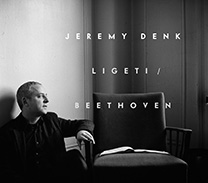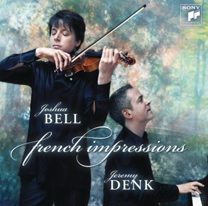When the new Kindle was announced a couple months ago, I had a revelation that I am sure everyone else already had, like most of my revelations. The sheer quantity of analysis/verbiage/content circumambulating this “event” amazed me, a mass delusion that the creation of a new gadget (comically similar to past gadgets) is something to get excited about. Or an enforced delusion, a ritual. My reward for reading all these numbing specification-speculations was a depressing awareness; I felt sure that prose about the Kindle would dwarf prose created about any single book on the Kindle.
The moral is this: we love our content delivery systems more than content.
If you do not believe me, walk into your neighborhood Apple Store. This is an act that used to thrill me a great deal—the heady smell of newly manufactured electronics, the eager acolytes in blue tight-fitting T-shirts. Everything is sterile, clean lines, rows, there is the tiny rectangle of the iPhone, the larger rectangle of the iPad, more rectangles, some standing up some sitting down, all on long rectangle tables which desire not to be seen, to be plain, glistening, polished. Anything resembling content—applications, games, iPhone cases with wacky designs—has been banished to the corner, to the basement. And you can see why, it looks bad. Content is too personal for selling here, it musses the message. A sofa placed there would be stared down by everything else, until it disintegrated out of shame. Its cushioniness is, like content, obsolete. You sense content is obsolete. The Apple Store is the opposite, the nemesis of (say) the English library, filled with dark wood and must and dust and books stacked to the ceiling and leather chairs and a desk with grandfather’s will locked in the bottom drawer. It does slightly amaze me, the consistency of the message here, and particularly the lack of desire to have anything at all ameliorating the severity of the thing, any sign of heritage or aging, and how much we love it as such.
So many happy excited faces walking in, out.
As content delivery devices become more and more important to us, it becomes more and more important that they be sleek, impersonal, industrial slabs. For God’s sake, just consider the original iPod. Now it’s a Chiclet of metal. We’ve been on a long journey from the LP with its huge cover art and from the act of laying the needle gently down on the vinyl, the scratch of contact … to this hard drive encased in polyethylene, clicking through menus, calling up files in a flash. Our wide, fat, tubed TVs have become flat ginormous screens, trying to vanish into the wall, satisfying our urge for bigness while still nodding to a national obsession with youth, slimness. There is a general desire not to have anything particularly distinguishing about the object; the device should be semi-invisible, neutral, like every other object, but somehow also status-laden (size, speed).
Think how desperately the corporate persons must be searching for new ways to sell us content delivery systems, one in every possible size, to fit in every possible nook and cranny of daily life, which at a certain point feels like humanity is eating itself, walling itself in, from the App to the much more boring Application to the operating system, walls of menus, hierarchies of ways of delivering things, ways of encountering things. Paranoiac, I found myself surrounded by menacing content delivery in my own home, phone, Kindle, laptop, desktop, TV … and lastly my eyes rested on the piano.
By now it’s probably sunk in with me that a book’s just a file. Many bleak mornings I have meditated on this. It has nothing to do with the pile of paper I used to call a book. My pile of paper was a sentimental attachment, wasteful, destructive, forest-raping. But don’t you see, in this little war of content versus content delivery … once a book is just a file, once the complete Beethoven Sonatas are just so many megabytes, etc. etc. content is suddenly looking awfully contentless? It vanishes into digital 1 and 0 existence, a great equalizer, river of electrons. With the weird consequence being, that delivery devices are more tangible “things” than the books they hold. No wonder we obsess about them, since the things we used to call things are suddenly files, endlessly electronically vanishing. Our right to them is held in a server somewhere, whereas our computers/Kindles/iPads are ours, we hold them obsessively in our hands, like lovers.



12 Comments
I think it’s important not to lose sight of how new mobile technologies are opening doors for more people to experience and create art on their own terms, while the English library was the exclusive domain of a very privileged few. It also happens to have encouraged a new paradigm of how we define creativity and content. A new language may sound nonsensical to us at first, but that doesn’t mean it’s not worth learning.
Reading this I was reminded of observations about media made by Adorno in his various critiques of the “culture industry”, particularly his piece “Fetish Character of Music and the Regression in Listening”.
It seems that with the development of technology and the new media that accompany it, the medium in question is seen to always move further away from the source. From a physical standpoint this is certainly true – no matter how many bits you use to encode Bach’s Brandenburg Concerti it is still not the same as listening to it in a concert hall. Thus the “regression”.
But I think it is interesting that, as you pointed out above, the cultural artifact in question is no longer the commodity; rather the means itself of delivering the commodity becomes the commodity.
This certainly changes the way a user interacts with the cultural artifact in question, by further separating the user from the content and instead leading the user to fixate on form. This definitely seems to embody the underlying fetish character that Adorno is critiquing.
Check out the new Stuttgart City Library. Not English style.
Your “book” was once cutting edge technology, which, for the most part now, is one more rectangle, albeit of paper rather than glass and metal, helping to shoot you through to the centre, the content.
I love the way you talk about content and carriers and your obviously emotional attachment to the intangible.
But I’m a little confused by your point.
Paragraph one derides the apple store for apparently being a store, putting their main products in the centre and placing the accessories by other manufacturers at the sides. Comparing the Apple store to the british Library is a little incongruous; might as well compare Tate Modern to the Gherkin, both a re modern buildings, and, ummm…. yeah. They are very different things that perform their intended purpose quite well.
And watch people use their delivery mechanisms.
A good delivery mechanism, like a well written book, takes the person through to the content. Ask a reader what page a great event in the book occurred. Yeah, exactly. ask them where it occurred in the story sequence, even when the story sequence is different to the writing sequence, and they will re=ply with detail.
Good messages help you forget, or at least dis-attend the messenger (messenger is not the same as author, BTW!). Ever have that moment when a memorable thing came to mind but you forget where you received it? yes!
So how is the attachment to a vinyl LP of your favourite Beethoven Sonata any different to the iPod/MP3 delivering it. I thought what you are really attached to is the experience of connecting with the musical work, surely. Are you as attached to the carrier when it is a collection of paper and plastic and silicon?
But you raise some interesting points, the physicality of the previous methods do much to build attraction, the modern methods, however, can bring us closer to more attachment to he ephemeral content itself, which, in truth, is our relationship with it, not just the content supplied by the author.
Thanks, Jeremy. That was chilling.
Another enjoyable post, although I feel like you’re emphasizing the negative at the expense of the positive. I just got a Kindle, too, and it has its advantages (key among them, for me, is that it makes it a lot easier to hold a 900-page “book” while lying in bed with a cat draped over one arm) and disadvantages (e.g. you can’t as easily hold your place with your thumb while quickly flipping back to remind yourself what *exactly* the suspect said to Detective Inspector McProtagonist 15 pages ago) compared to ye olde codex.
I think the real development here is that modern technologies have enabled content and delivery to be separated in ways they couldn’t be before. With an LP or a printed book, the delivery device is almost inseparable from the content. I mean, yes, you could get the same content “delivered” in another edition of the book, or the same recording on a different LP with a different cover…but the book you have can’t also be *another* book; the LP can’t change its grooves to play different music. WIth radio, TV, and now digital devices, one physical thing can bring us a lot of different content. This is, for the most part, a new thing, though I think you’re quite astute to recognize that the piano, or any musical instrument, can also deliver a lot of different content — although certainly not in such a passive way, and it hardly seems like shallow materialism for someone to treasure a good instrument (as opposed to a shiny new iThingy). So this content/device separation isn’t *entirely* new.
As for the sleek impersonality of the new delivery devices…the sleekness is no doubt typical manipulative marketing, but the impersonality doesn’t seem so bad to me. I don’t want to be reading Kierkegaard on a P.G. Wodehouse-themed Kindle, or vice versa. Neutral is okay here.
But yes, this is a new thing, and something is being lost. People will no longer haul their beloved, battered childhood copy of Wind in the Willows off to college with them for sentimental reasons. They won’t even keep their battered old Kindle. But that’s the march of time for you — things get lost. (Many of us hardly ever look up and see the Milky Way anymore, for example.)
No need to be too philosophical, though — I’m hopeful that the good old book will be around for a while yet; especially those books that really deserve to take up space.
Hope you are going to post soon about the Rubin Institute at Oberlin? Your recital was wunderbar– & my first time hearing The Alcotts!
I’m going to buy the Ives CD which you recorded. I’m just wondering one thing about posting: it says “Your email is never published nor shared.”; but whenever I check your blogs, my email address is shown without me doing anything, and I’m a little bit uneasy. Anyway, I’ve learned a lot about music from your writing. Thanks!
Welcome to the digital paradigm. Great post, cheers.
@ Check out the new Stuttgart City Library. Not English style.
Not at all, no. But isn’t it rather wonderful?
And the plain, unobtrusive design foregrounds the books, so it manages to combine a minimalist design aesthetic whilst not marginalising the content.
Bravo!
I think it is great to have kids learn how to play piano. From my own experience, it is a joy for a life time…not just for the kids who have learned how to play piano, but the people around. However, one important reminder is that you must be very careful about the kids eye-sight. My boy is near-sighted when he was 6 years. He started playing when he was 4 and spent lots of time. Reading piano music is quite tiring for young kids eyes. I suggest you provide adequate lighting when your kids are playing music. There are very good piano lamp or piano light you can find for both illumination and DECORATION purposes. You can see examples on http://www.conocopianolamps.com and http://www.conocolighting.com as an examples. There are also other brands. These two web sites have very good grand piano lamp as well.